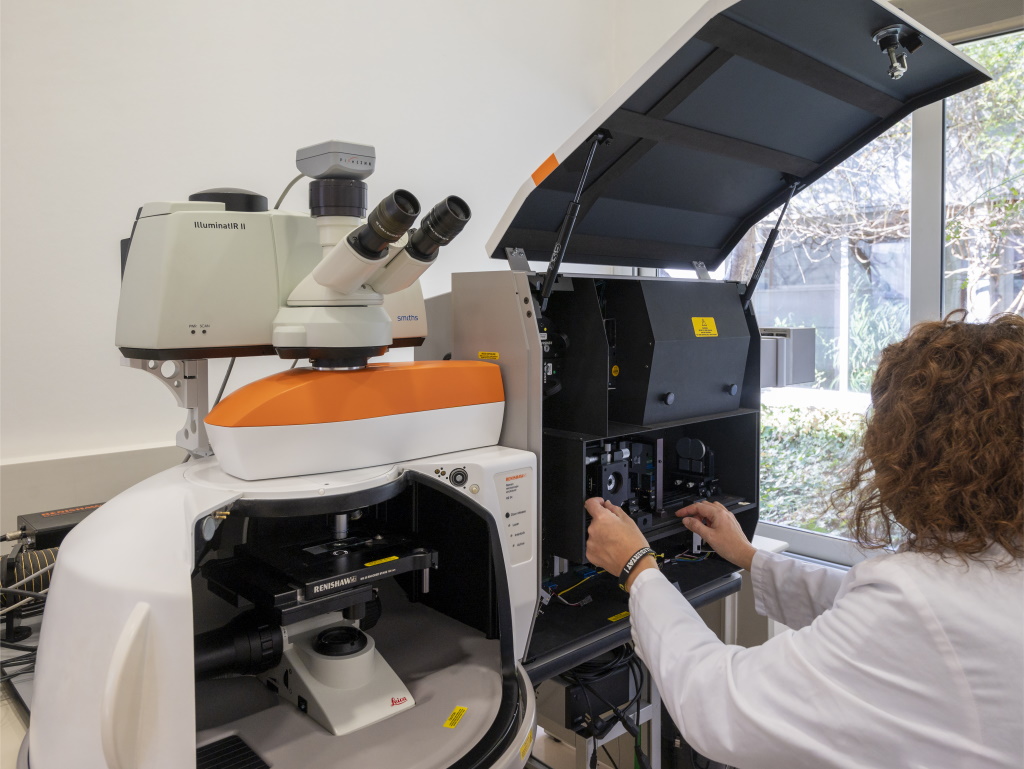
-
Description
Raman spectroscopy provides chemical and structural information through the vibrational and rotational analysis of the chemical species. It can be used to a plethora of samples without any previous sample preparation requirement (organics and inorganics, liquids and solids).
This technique is complementary with infrared spectroscopy; spectral lines not visible in a Raman spectrum can be visible in infrared spectroscopy and the other way around. Raman maps show the spatial distribution of chemical compounds contained in planes or different heights of the sample.
The Raman microscope Renishaw InVia is equipped with three diffraction gratings of 2400 lines/mm, 1200 lines/mm and 600 lines/mm, it has three available lasers of 514 nm, 633 nm and 785 nm of wavelength, and NExT filters for studies under 100 cm-1.
- Comprehensive compound analysis in different fields: pharmaceutical industry, coal industry, materials science, biology, crystallography, etc.
- Identification of unknown materials and differentiation of materials.
- Composition and physical properties of materials, layer thicknesses, crystallinity and if they are under stress or strain.
- Spatial location of the different chemical compounds in a sample, particles size and Raman maps distribution.
- Relative quantities of materials and chemical compounds.
- Dynamic studies: temperature experiments from -196 °C to 600 °C in a controlled atmosphere.
- Crystalline orientation analysis by means of light polarization and the acquisition of the parallel and perpendicular components of light.

-
Contact those
responsibles - Eric Pedrol Ripoll, Ph.D.
- 977558473
- eric.pedrol(ELIMINAR)@urv.cat
-
- Mercè Moncusí Mercadé
- 977558123
- merce.moncusi(ELIMINAR)@urv.cat
-
Technical coordinator
- Mercè Moncusí Mercadé
- 977558123
- merce.moncusi(ELIMINAR)@urv.cat
*Already registered on the User Portal?
